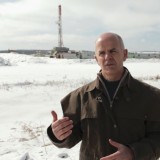Read this story from the Vancouver Sun, reporting on the BC NDP’s support for natural gas and LNG development in BC integral to BC’s future, dismissing the mounting environmental concerns about fracking and LNG in the process. (June 14, 2012)
Opposition energy critic John Horgan sounded almost as happy as the B.C. Liberals recently when Shell Canada announced that it was moving forward on a $4-billion pipeline to transport natural gas from northeastern B.C. to a proposed liquefaction plant at Kitimat.
“Very good news,” Horgan said. “I’m pretty excited about it. Shell’s a big deal. They’ve got gas that they want to get out of the ground, and they want to get it to a market where they can get a better return than they do in North America.”
Natural gas, not oil, be it noted. Still his enthusiasm for LNG development stands in marked contrast to the national NDP’s recent doomsaying about resource exports, hydrocarbons, pipelines and tanker traffic.
When Horgan was reaffirmed as energy critic by new leader Adrian Dix last year – a position that is likely to translate into a term as energy minister if the New Democrats form government in 2013 – he made it clear that the party’s green proclivities on oil would have limited application to development of the provincial natural gas resource.
“A natural-gas proposal makes sense,” Horgan said, “because it’s a product from British Columbia, so the royalties would stay here, the jobs would be created here. And gas vents; it doesn’t stick.”
His made-in-B.C. stance even extends to the most controversial aspect of natural gas development, namely the means of extracting it.
Fracking, to use the unflattering short-hand term for the process of hydraulically fracturing shale rock to release the gas trapped within, has generated concerns about excessive water use, subsurface pollution, and seismic activity.
But would Horgan “call for a moratorium on hydraulic fracturing until British Columbians know more?” The question was put to the would-be energy minister by would-be NDP candidate George Heyman of the Sierra Club during Horgan’s recent appearance on Voice of B.C. on Shaw TV.
“No,” was the clear implication of his more lengthy reply.
“People within the NDP predisposed to green, environmental concerns were troubled that you heard from other jurisdictions where people were lighting their taps on fire because the gas had seeped into aquifers and into the water tables.
“That’s not the case in B.C. Our deposits are three and four kilometres under the ground. In Pennsylvania, the Marcellus play, which is providing gas now to much of Eastern Canada – that’s very shallow, relative to our deposits.”
He’s impressed with the B.C. industry’s experience and expertise. “We’ve been fracking in B.C. for decades and we do it fairly well. I’ve been to a number of frack sites, and I’m comfortable with the technology.”
As for water use, he maintains the provincial party has already addressed those concerns. “We’ve put in place what we consider to be a scientific panel that would review and ensure that water is disposed of appropriately, and that we reduce the amount of fresh water that’s involved in fracking.”
Seismic activity? “Not significant issues when you’re that deep in the ground. You wouldn’t want to necessarily be fracking along the Juan de Fuca fault, but in the Peace country it’s relatively safe – at least, that’s what I’m advised, and I’ve not heard of any seismic activity in the Peace.”
So green New Democrats like Hey-man should relax. But even as Horgan and his colleagues support fracking, pipelines, terminals and the tanker traffic necessary to transport the product overseas, there’s another big challenge to LNG development.
Read more: http://www.vancouversun.com/technology/Horgan+deems+greener+future/6780093/story.html



